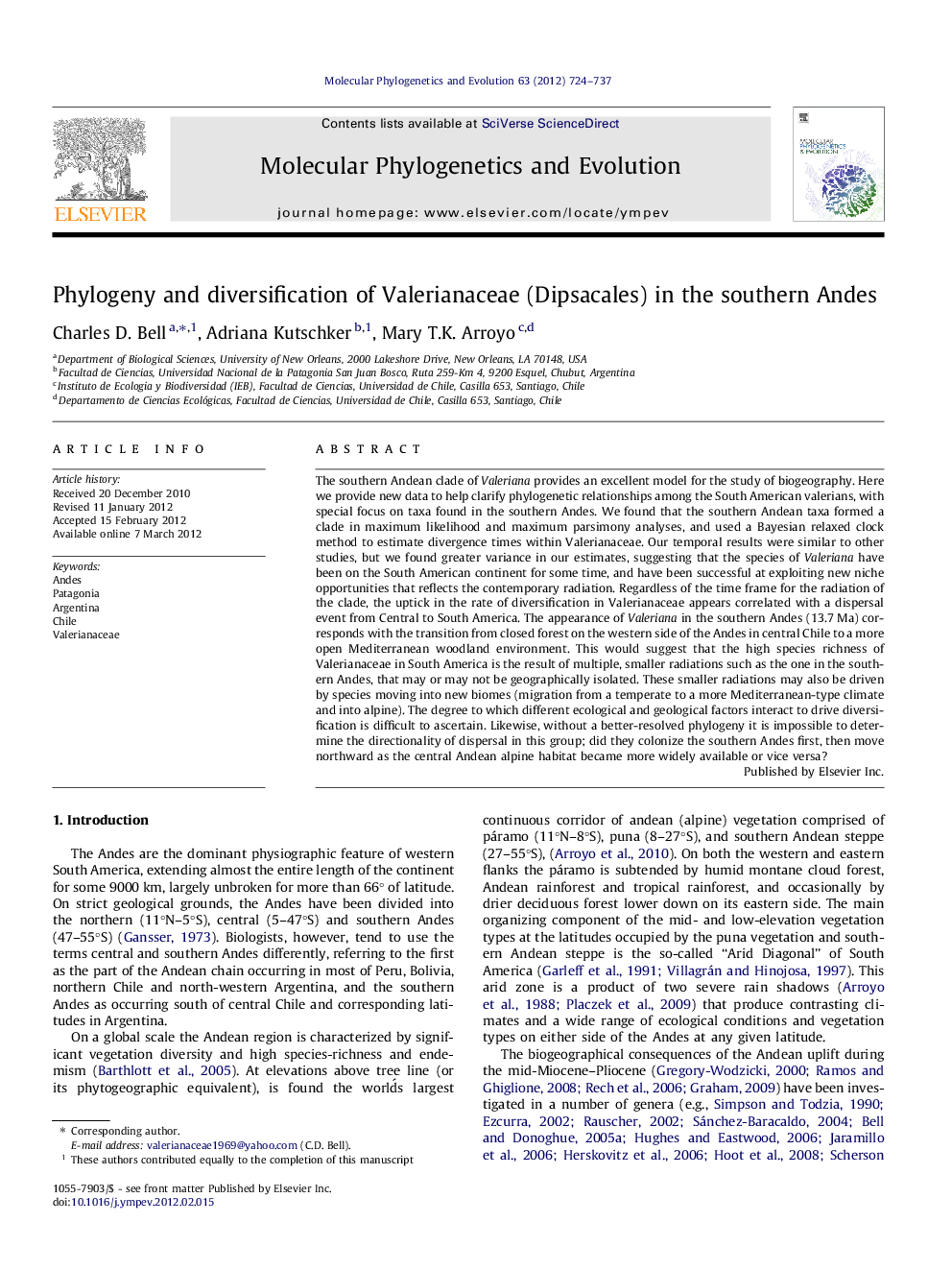| کد مقاله | کد نشریه | سال انتشار | مقاله انگلیسی | نسخه تمام متن |
|---|---|---|---|---|
| 2834137 | 1164292 | 2012 | 14 صفحه PDF | دانلود رایگان |

The southern Andean clade of Valeriana provides an excellent model for the study of biogeography. Here we provide new data to help clarify phylogenetic relationships among the South American valerians, with special focus on taxa found in the southern Andes. We found that the southern Andean taxa formed a clade in maximum likelihood and maximum parsimony analyses, and used a Bayesian relaxed clock method to estimate divergence times within Valerianaceae. Our temporal results were similar to other studies, but we found greater variance in our estimates, suggesting that the species of Valeriana have been on the South American continent for some time, and have been successful at exploiting new niche opportunities that reflects the contemporary radiation. Regardless of the time frame for the radiation of the clade, the uptick in the rate of diversification in Valerianaceae appears correlated with a dispersal event from Central to South America. The appearance of Valeriana in the southern Andes (13.7 Ma) corresponds with the transition from closed forest on the western side of the Andes in central Chile to a more open Mediterranean woodland environment. This would suggest that the high species richness of Valerianaceae in South America is the result of multiple, smaller radiations such as the one in the southern Andes, that may or may not be geographically isolated. These smaller radiations may also be driven by species moving into new biomes (migration from a temperate to a more Mediterranean-type climate and into alpine). The degree to which different ecological and geological factors interact to drive diversification is difficult to ascertain. Likewise, without a better-resolved phylogeny it is impossible to determine the directionality of dispersal in this group; did they colonize the southern Andes first, then move northward as the central Andean alpine habitat became more widely available or vice versa?
Figure optionsDownload as PowerPoint slideHighlights
► For the first time in any phylogenetic analysis, species from the southern Andes were included.
► Species of Valeriana have been in South American and have been successful at exploiting new niche opportunities.
► The species diversity of Valerianaceae is the result of multiple, smaller radiations such as the one in the southern Andes.
► These radiations may be driven by species moving into new biomes (from temperate to a Mediterranean).
► The degree that different ecological and geological factors are playing to drive diversification is also difficult to say.
Journal: Molecular Phylogenetics and Evolution - Volume 63, Issue 3, June 2012, Pages 724–737